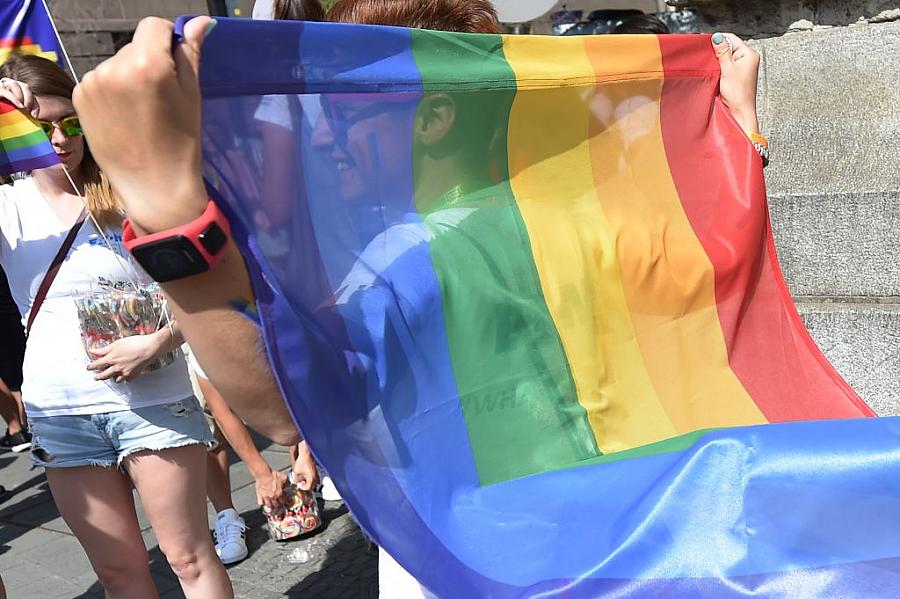Why do so many transgender youth say they want to kill themselves?

(Photo: Attila Kisbenedek/AFP/Getty Images)
Dallas Michelle Ducar, a psychiatric-mental health nurse at a transgender health program in Boston, counsels children and teens struggling with their gender identity. As a 27-year-old transgender woman, she understands their emotional pain. Before she began her transition, three years ago, Ducar struggled with depression, anxiety, substance abuse and the profoundly unsettling sensation “that things did not feel real.” At times Ducar contemplated suicide.
“I got to a really dark place,” she said.
Suicide is the second leading cause of death among adolescents and young adults in the United States, and mounting evidence suggests the risk is especially high for transgender youth. In one of the earliest large-scale studies of the problem, an analysis of 2,200 transgender and non-conforming 9th and 11th graders across Minnesota, nearly one-third said they had attempted suicide. More than half reported non-suicidal self-injury during the previous year. And nearly two-thirds said they’d had suicidal thoughts, three times higher than the rate reported by their cisgender peers. The study was published in the Journal of Adolescent Health in 2017.
The picture becomes even more alarming when researchers analyze data by subgroups of gender identity. In a 2018 study of youth ages 11-19, 51% of transgender males said they’d attempted suicide. For transgender females, the figure was 30% percent.
Similarly, a newly published study in Pediatrics found that transgender males ages 14-18 (and non-conforming peers who’d been assigned female at birth) thought about, planned and tried suicide at higher rates than other teens. The study, by University of Pittsburgh researchers, also found transgender females to be at higher risk than previously reported. The team believes that’s because most studies lump them together with non-gender-conforming adolescents assigned male at birth, whose risks seem to be comparatively lower.
Suicidal thinking and action among transgender adolescents “likely results from disproportionate amounts of psychosocial stress, including victimization,” the researchers wrote. But the field of inquiry is so new that nobody can say with certainty what’s driving the risks.
What is the influence of the gender assigned at birth and the norms and ingrained beliefs attached to that gender? How do hormonal treatments change the brain and affect mood? To design the best prevention and intervention strategies, Ducar said researchers must figure out when the suicide risk tends to be highest.
Ducar works at the Transgender Health Program at Boston’s Massachusetts General Hospital. Her experience tells her the suicide danger is probably greatest when people start to transition, because of the pressures of coming out to an often-hostile world.
“When you’re out in public, and you don't have very many hormones on board, and you’ve changed but not that much, you’re at a real high risk of violence, discrimination and also being cut off from your family,” she said.
Ducar herself suffered most before she transitioned or even admitted the need to do so. As a child Ducar pilfered her mother’s closet and played with cross-dressing. “I grew up in a Catholic family and so I would pray to God all the time that he would make me a girl,” she said.
Ducar repressed those feelings, attended an all-boys high school, joined a fraternity as a student at the University of Virginia, and sank into substance abuse and despair. The darkness lifted when she began her transition.
“When you’re out in public, and you don't have very many hormones on board, and you’ve changed but not that much, you’re at a real high risk of violence, discrimination and also being cut off from your family.”
Ducar stepped out in public dressed as a woman for the first time at the Women’s March in January 2017. She wore a green dress, black tights, beige cardigan and black booties. Her girlfriend and several fraternity friends walked by her side. “I felt so, so myself,” she recalled. “From that moment on I felt great.”
Ducar enjoyed tremendous support from her family. Many transgender adolescents — and lesbian, gay and bisexual youth more generally, for that matter — do not receive that kind of embrace, especially in middle and high school.
In a 2017 national survey, 60% of LGBTQ students said they felt unsafe at school, 70% experienced name-calling or threats in the previous year, and 30% said they’d been physically harassed. Only 20 states and the District of Columbia have anti-discrimination or anti-bullying laws that explicitly protect LGBTQ students.
Federal law prohibits discrimination on the basis of sex, national origin, race and religion, but it’s silent about sexual orientation and gender identity. In the current political environment, that is unlikely to change. In fact, things may get worse.
The Trump administration recently announced plans to eliminate provisions in the Affordable Care Act that protect transgender people from discrimination in health care and insurance coverage. Human rights advocates, LGBTQ activists, and health and legal experts submitted more than 120,000 public comments against the proposal. The administration is expected to issue a final ruling early next year.
While legal protections are critical, they are no guarantee against exclusion, discrimination and harassment. California has some of the strongest legislation to create safe, inclusive, school environments for LGBTQ students. But implementation often falls short of these goals. The nonprofit Equality California Institute surveyed public school districts on their policies and practices to comply with the law, such as suicide prevention programs, teacher training and inclusive curriculum development. Of the 130 districts that returned the survey, 22 earned a “top-tier” performance rating, according to the institute’s 2019 report card. Eighty ranked in the middle tier, and 28 the bottom.
One can only wonder what’s happening in the 213 districts that failed to respond.
**

